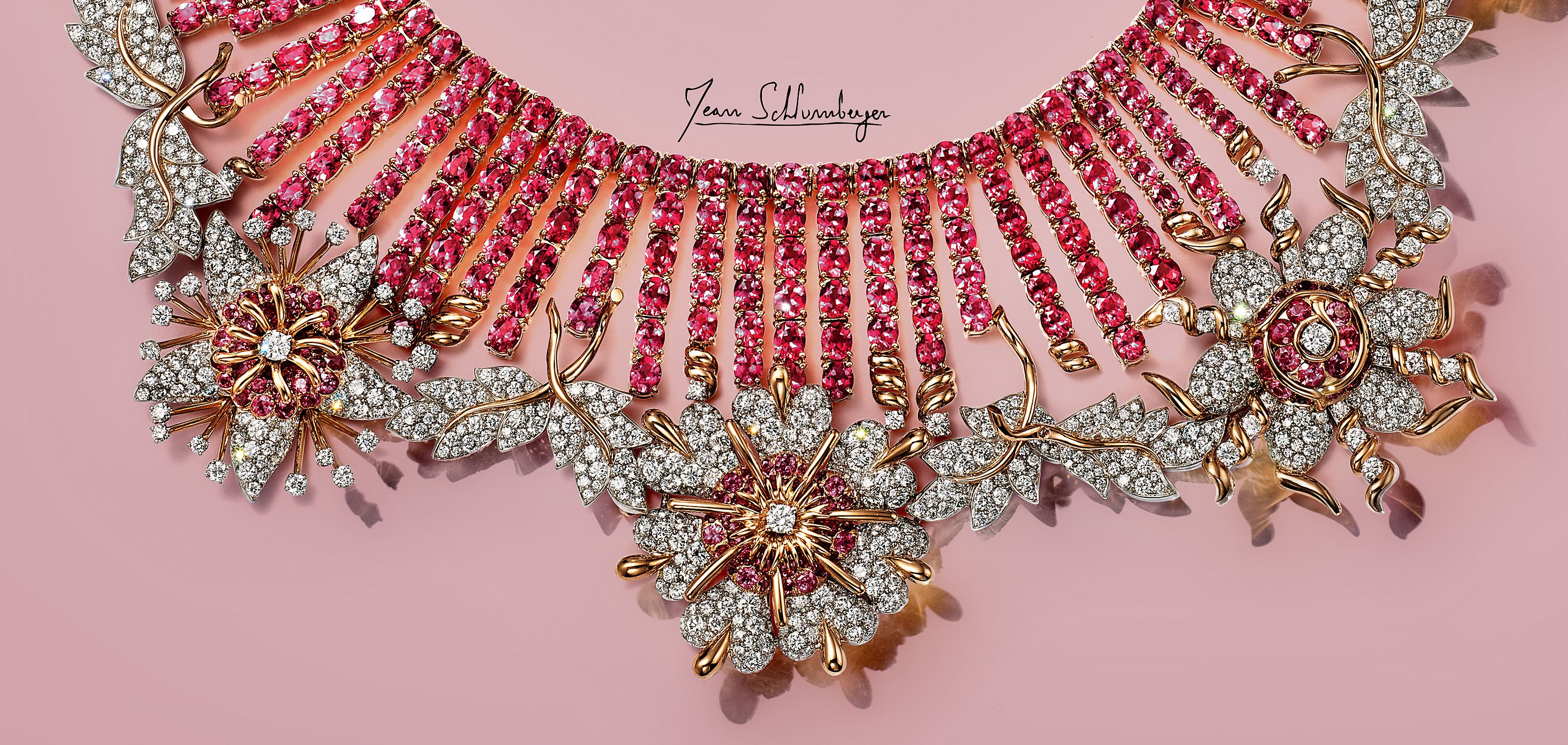Jean Schlumberger
As one of the 20th century’s most gifted artists, Jean Schlumberger is renowned for his fantastical creations. A man of refined taste, he possessed an uncanny ability to bring the world around him to life—rendering his surreal creations of flora, fauna and fabric in diamonds and gemstones. Innovative, imaginative and uninhibited, Schlumberger ushered in an unprecedented chapter of jewelry design when he began his legendary collaboration with Tiffany in 1956.
The Artist
Born in 1907 into a prominent family of textile manufacturers in Alsace, France, Schlumberger demonstrated a talent for drawing from a young age. In his early 20s, Schlumberger moved to Paris to hone his creative impulses and passion for the arts and opened an atelier on rue de la Boetie. In 1937, fashion designer Elsa Schiaparelli learned of Schlumberger’s artistic genius, and enlisted him to lead design for her collections of buttons and costume jewelry, to widespread acclaim. After serving in the French Army during World War II, Schlumberger moved to New York and opened a small salon. Despite his early success, it wasn’t until his 50s that Schlumberger was asked by Walter Hoving, then Chairman of Tiffany & Co., to join the company as Vice President. A special design studio and salon were decorated to the designer’s specifications, and with an unlimited supply of the finest colored stones now at his fingertips, Schlumberger created some of the most incredible jewelry designs of his career.
A superb draftsman, the self-taught artist began each design with a drawing to discover the purity of the forms that caught his eye. With smooth, ultrafine tracing paper, pen and India ink as his media, Schlumberger applied the gouache technique with continuous, fluid lines, giving form to his imaginative shapes and elegant motifs. Innovative by nature, it was during this time that Schlumberger created some of Tiffany’s most iconic designs including his Bird on a Rock brooch, intricate paillonné enamel bangles, the Cooper bracelet and the Sixteen Stone diamond ring.
The Craftsmanship
As one of the most gifted jewelry designers of all time, Schlumberger’s dedication to craftsmanship was unparalleled. His masterful woven gold designs pay homage to his family’s textile legacy and he seamlessly juxtaposed geometric motifs with organic shapes to create three-dimensional textures. Mixing 18k gold and platinum, Schlumberger’s wire work seemingly surpasses jewelry design, entering the world of sculpture. Not only was he known for his innovative use of twisted 18k yellow gold, Schlumberger also paid homage to nature’s palette through his use of brightly colored enamel and vivid gemstones. In fact, it was Schlumberger who revived the public’s inclination towards bolder, stronger pieces with his unexpected pairings of bright colors. Schlumberger is also credited with reviving the art of paillonné enamel—a 19th century art form that involves a labor-intensive process of layering enamel over 18k yellow gold. By firing translucent enamel over fine sheets of gold foil, he was able to create masterpieces of extraordinary depth—most famously, his iconic paillonné enamel bangles.
The Inspiration
Schlumberger often traveled to Bali, India and Thailand to fire his imagination. The energetic and dynamic quality of his work is the result of immersing himself fully in nature. In fact, it was at his home on the Caribbean island of Guadeloupe where Schlumberger created some of his most celebrated designs.
Exceptional Creations
Designs exemplifying expert craftsmanship.

















